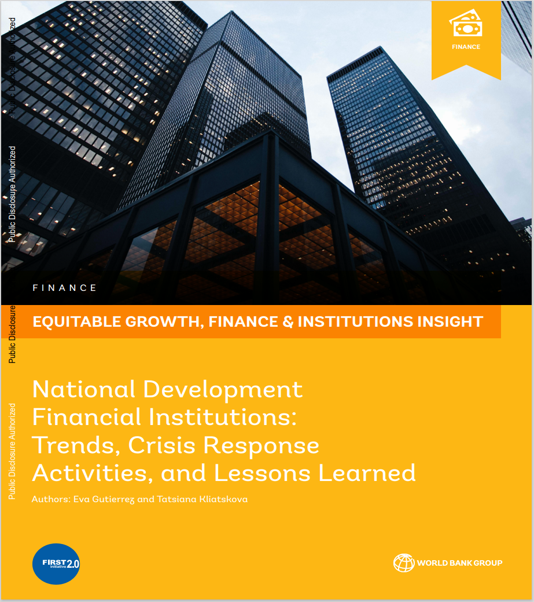论著
【World Bank's Report】National Development Financial Institutions : Trends, Crisis Response Activities, and Lessons Learned
In recent years, there has been renewed interest in providing countercyclical lending and sustainable development financing through national development financial institutions (NDFIs). While NDFIs are often a feasible solution for addressing development needs and closing financing gaps, they are not always the best solution, and their setup and structure need to be tailored to the country’s needs. It is important that prior to setting up a new NDFI or increasing the scope of operations of the existing ones, governments consider all available public policy interventions as well as options for private capital involvement to address unmet financing needs of the private sector. NDFIs will likely see strong demand for their interventions in a post- Coronavirus disease 2019 (COVID-19) recovery phase. This calls for enhanced NDFI efficiency and effectiveness. To maximize the net benefits of NDFIs and ensure their financial sustainability, NDFIs should be effectively managed and properly supervised. NDFIs have been important actors in the implementation of countercyclical finance in response to the COVID-19 pandemic and have helped mitigate a credit crunch. During the COVID-19 pandemic, governments have taken on large balance-sheet risks to support credit growth, in many cases using NDFIs as administrators of public anti-crisis programs.
Citation
“Gutierrez, Eva; Kliatskova, Tatsiana. 2021. National Development Financial Institutions : Trends, Crisis Response Activities, and Lessons Learned. Equitable Growth, Finance and Institutions Insight;. World Bank, Washington, DC. © World Bank. https://openknowledge.worldbank.org/handle/10986/36467 License: CC BY 3.0 IGO.”
URI
http://hdl.handle.net/10986/36467

